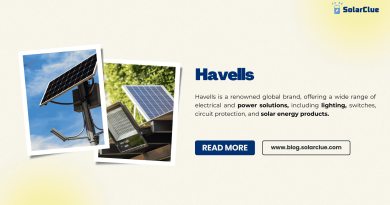How to sell electricity from solar panels
As solar power becomes more prevalent, many homeowners and businesses are generating more electricity than they can use. This excess energy can be sold back to the grid, providing additional income and contributing to a more sustainable energy system. This blog will explain the concepts of net metering and feed-in tariffs, discuss factors influencing the value of electricity credits, and provide insights into government policies and regulations related to electricity trading. We’ll also explore additional revenue streams and offer tips for maximizing income from your solar panel system.
Table of Contents
- 1 Understanding Net Metering and Feed-In Tariffs
- 2 Factors Affecting the Value of Electricity Credits
- 3 Selling Electricity Back to the Grid: The Process and Benefits
- 4 Government Policies and Regulations Related to Electricity Trading
- 5 Additional Revenue Streams (e.g., Solar Renewable Energy Certificates (SRECs))
- 6 Challenges and Limitations of Selling Electricity
- 7 The Future of Electricity Trading and Solar Power
- 8 Case Studies of Successful Electricity Selling Ventures
- 9 Tips for Maximizing Revenue from Solar Panel Electricity
- 10 Comparison of Net Metering and Feed-In Tariffs
- 11 Conclusion
- 12 FAQ Section
Understanding Net Metering and Feed-In Tariffs
Net Metering
- Definition: Net metering allows solar panel owners to send excess electricity back to the grid. In return, they receive credits that can be used to offset future electricity consumption.
- How It Works: When your solar panels produce more electricity than you use, the surplus energy is sent to the grid. Your electricity meter runs backward, and you earn credits for the electricity exported. These credits can be used when your solar panels aren’t generating enough power, such as at night or during cloudy days.
Feed-In Tariffs (FITs)
- Definition: Feed-in tariffs are payments made to solar energy producers for the electricity they generate and feed into the grid. Unlike net metering, which offsets consumption, FITs provide a direct payment based on the amount of electricity exported.
- How It Works: With a FIT, you are paid a fixed rate for every kilowatt-hour (kWh) of electricity your solar panels send to the grid, regardless of your own electricity consumption. This rate is typically set by the government or utility company.
Comparison
- Net Metering: Best for reducing electricity bills by offsetting consumption.
- Feed-In Tariffs: Ideal for generating consistent income from excess electricity production.
Factors Affecting the Value of Electricity Credits
Time-of-Use Pricing
- Definition: Some utility companies implement time-of-use (TOU) pricing, where the value of electricity credits varies based on the time of day.
- Peak vs. Off-Peak: Electricity generated during peak hours (when demand is high) is more valuable than electricity produced during off-peak hours.
Regional Differences
- Utility Rates: The value of electricity credits can vary significantly depending on the region and the rates set by local utility companies.
- Government Policies: Some regions offer higher incentives or better rates for solar energy, making it more profitable to sell excess electricity.
System Efficiency
- Panel Performance: The more efficient your solar panels, the more electricity you can generate and sell back to the grid.
- Inverter Quality: A high-quality inverter ensures that the maximum amount of electricity generated is usable and can be fed into the grid.
Selling Electricity Back to the Grid: The Process and Benefits
Step-by-Step Process
1. Install a Grid-Tied Solar System: Ensure your solar panel system is connected to the grid and meets local regulatory requirements.
2. Apply for Net Metering or Feed-In Tariffs: Contact your utility company or local government to enroll in net metering or FIT programs.
3. Track Your Energy Production: Use monitoring tools to keep track of how much electricity your system generates and how much is fed back into the grid.
4. Receive Credits or Payments: Depending on your chosen program, you’ll either receive credits on your electricity bill or direct payments for the electricity sold.
Benefits
- Reduced Electricity Bills: Net metering allows you to offset future energy costs with the credits earned.
- Additional Income: Feed-in tariffs provide a steady revenue stream for the electricity you generate and sell.
- Environmental Impact: Selling excess electricity contributes to a cleaner grid by reducing reliance on fossil fuels.
Government Policies and Regulations Related to Electricity Trading
National and State-Level Policies
- Incentives: Many governments offer incentives such as tax credits, grants, or rebates for solar panel installations, which can enhance the profitability of selling excess electricity.
- Net Metering Policies: Policies can vary by region, with some areas offering full retail rates for net metering while others provide lower rates.
- Feed-In Tariff Programs: Some countries have established FIT programs with set rates to encourage solar energy production.
Compliance and Regulations
- Interconnection Standards: Ensure your solar system complies with local grid interconnection standards, which may include specific equipment requirements or safety measures.
- Permitting: Obtain necessary permits and approvals from local authorities to connect your system to the grid.
Additional Revenue Streams (e.g., Solar Renewable Energy Certificates (SRECs))
Solar Renewable Energy Certificates (SRECs)
- Definition: SRECs are tradable certificates that represent the environmental benefits of generating one megawatt-hour (MWh) of solar energy.
- How It Works: Utilities purchase SRECs to meet renewable energy requirements, and solar panel owners can sell SRECs to generate additional revenue.
- Market Value: The value of SRECs fluctuates based on supply and demand in the renewable energy market.
Green Energy Programs
- Corporate Power Purchase Agreements (PPAs): Some companies purchase green energy directly from solar producers through PPAs, offering another potential revenue stream.
Challenges and Limitations of Selling Electricity
Regulatory Hurdles
- Changing Policies: Net metering and FIT programs can change over time, potentially reducing the profitability of selling excess electricity.
- Capacity Limits: Some regions impose limits on the amount of solar energy that can be fed into the grid, which can cap your earnings.
Economic Considerations
- Lower Credit Rates: In some areas, the rate paid for excess electricity may be lower than the retail electricity rate, reducing potential savings or income.
- Upfront Costs: High initial costs for solar panel installation can be a barrier, although government incentives can help offset these costs.
Technical Challenges
- Grid Compatibility: Ensuring your solar system is compatible with the local grid and meets all technical requirements can be challenging.
- Maintenance: Regular maintenance of your solar system is essential to ensure optimal performance and maximize the electricity generated.
The Future of Electricity Trading and Solar Power
Technological Advancements
- Smart Grids: The development of smart grids can enhance the integration of solar energy into the grid, making it easier and more profitable to sell excess electricity.
- Blockchain and Decentralized Energy Trading: Emerging technologies like blockchain may enable peer-to-peer energy trading, allowing solar producers to sell electricity directly to consumers.
Policy Evolution
- Increased Incentives: As governments continue to prioritize renewable energy, more incentives and favorable policies for solar energy producers may emerge.
- Global Trends: The global shift towards clean energy is likely to increase demand for solar-generated electricity, potentially increasing the value of selling excess power.
Case Studies of Successful Electricity Selling Ventures
Case Study 1: Residential Solar Success in California
- Overview: A homeowner in California installed a 10 kW solar system and enrolled in the state’s net metering program.
- Outcome: By selling excess electricity back to the grid, the homeowner reduced their annual electricity bill by 80% and earned additional income through SRECs.
Case Study 2: Commercial Solar Farm in Gujarat, India
- Overview: A commercial solar farm in Gujarat utilized the state’s feed-in tariff program to sell electricity back to the grid.
- Outcome: The farm generated a steady revenue stream, supported by government incentives, and contributed to the local clean energy supply.
Tips for Maximizing Revenue from Solar Panel Electricity
1. Optimize System Efficiency: Regularly maintain your solar panels and inverter to ensure maximum energy production.
2. Monitor Energy Production: Use monitoring tools to track your system’s output and adjust usage patterns to maximize credits or income.
3. Stay Informed on Policies: Keep up-to-date with changes in net metering and feed-in tariff policies to take full advantage of available programs.
4. Explore Additional Revenue Streams: Consider selling SRECs or entering into PPAs to increase your income from solar energy.
5. Consider Battery Storage: Investing in battery storage can allow you to store excess energy and sell it during peak demand periods when prices are higher.
Comparison of Net Metering and Feed-In Tariffs
| Aspect | Net Metering | Feed-In Tariffs (FITs) |
|---|---|---|
| How It Works | Credits for excess energy used to offset future bills | Direct payments for every kWh exported |
| Revenue Source | Reduced electricity bills | Steady income from selling energy |
| Rate Type | Typically retail electricity rate | Fixed rate set by government or utility company |
| Best For | Homeowners looking to reduce electricity costs | Producers seeking consistent income |
| Limitations | May be subject to time-of-use pricing | Rates may decrease over time as programs evolve |
Conclusion
Selling excess electricity generated by solar panels offers a valuable opportunity to reduce energy costs and generate additional income. By understanding net metering, feed-in tariffs, and other revenue streams like SRECs, you can maximize the financial benefits of your solar system. Staying informed about government policies, maintaining your solar panels, and exploring innovative technologies will ensure that you make the most of your investment in renewable energy.
FAQ Section
1. What is the difference between net metering and feed-in tariffs?
Net metering provides credits on your electricity bill for the excess energy you generate, which can be used to offset future consumption. Feed-in tariffs, on the other hand, offer direct payments for the electricity you send back to the grid.
2. How much can I earn by selling excess electricity?
The amount you can earn depends on factors such as the size of your solar system, local utility rates, government incentives, and whether you are enrolled in a net metering or feed-in tariff program.
3. What are Solar Renewable Energy Certificates (SRECs)?
SRECs are tradable certificates that represent the environmental benefits of generating one megawatt-hour (MWh) of solar energy. Solar panel owners can sell SRECs to utilities that need to meet renewable energy requirements.
4. Are there any challenges to selling electricity back to the grid?
Yes, challenges include regulatory changes, potential limits on how much energy can be sold, and the need for your system to meet grid compatibility standards.
5. Can I sell electricity directly to other consumers?
While traditionally, electricity is sold back to the grid, emerging technologies like blockchain are paving the way for peer-to-peer energy trading, which could allow direct sales to other consumers in the future.


